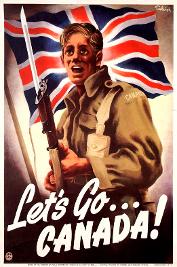
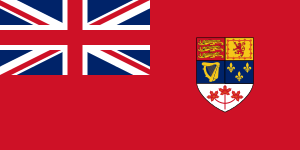
Background
• There are many interpretations as to the cause of World War II
• The most widely accepted is that the Treaty of Versailles was the major cause of WWII
The Treaty of Versailles
• The Treaty was signed on Saturday, 28 June 1919
• It was meant to stop another war from happening and punish Germany for starting the war
• The first 26 Articles of the Treaty set out the Covenant of the League of Nations; the rest of the 440 Articles detailed Germany's punishment:
1. Germany had to accept the Blame for starting the war (Clause 231).
2. Germany had to pay £6,600 million (called Reparations) for the damage done during the war.
3. Germany was forbidden to have submarines or an air force. She could have a navy of only six battleships, and an Army of just 100,000 men. In addition, Germany was not allowed to place any troops in the Rhineland, the strip of land, 50 miles wide, next to France.
4. Germany lost Territory (land) in Europe. Germany’s colonies were given to Britain and France.
• In 1933 Adolf Hitler and the National Socialist Party were elected
• He vowed to tear up the Treaty
• All other political parties were outlawed, Hitler became dictator.
• He began to break the terms of the Treaty
• He built up Germany’s armed forces
• Began to annex the territory taken by the Treaty
***Please note, this was complicated and involved a lot of history that we are not going into detail with. It was not as simplistic as the note makes it seem. I'll talk about it more in class.
- The two video clips below will give you a better appreciation of Hitlers appeal in the 1930's. The clip on the left is from Triumph of the Will - a Nazi Propaganda Film. Note the similarities in style and production with the video on the right.

A Policy of Appeasement
- The leaders of Britain, France and the United States did not take a stand against Hitler’s violations of the treaty.
- They wanted to avoid another war.
- They argued that by relaxing the terms, Germany would be satisfied and peace would prevail
- This tactic failed.
- Hitler demanded more and more of its lost territory (see Fig. 6.2 page 96)
- September 1,1939 Hitler invaded Poland
- Britain and France declared war on Germany two days later.
Phase 1: September 1939 to June 1940
September 1: Germany invades Poland
September 3: Britain and France declared war on Germany
•The Soviet Union also invades Poland. Germany and the Soviet Union has secretly signed a non-aggression pact and agreed to divide Poland between them. Thus fixing another problem (as they viewed it) from the Treaty of Versailles
September 10: Canada declared war on Germany
•The Allies: France, Britain, and the Commonwealth (Canada, etc…)
•The Axis: Germany, Italy, Japan
Global Context
•Japan and China have been at war since 1937. Imperial Japan is seeking to build an Empire throughout Asia.
•Poland is quickly defeated by Germany and the Soviet Union. The Allies can do little to stop the invasion. Poland is on the other side of Germany. The Germans use a new form of fighting called “Blitzkrieg” or “Lightning War” to overwhelm and defeat the Polish Army.
•Britain and France mobilize for war. During this time (fall of 1939 to spring of 1940 is known as the Phony War). Very little fighting between the major countries in the conflict.
•During the spring of 1940, the armies in Europe are on the march. France is dug in behind the “Maginot Line” The German Army avoids this by going through Belgium and Holland making the Maginot Line ineffective as a defense. The British and French Armies are defeated (Dunkirk).
•The French government surrenders to Germany.
•The British Empire stands alone against Nazi Europe
Canada’s Contribution
A small, volunteer army was sent to Britain in December 1939.Merchant ships transported military personnel and war goods. Many of these ships were sunk by German subs or U-boats.
The Canadian Air Force would train allied pilots and air crews. For more info on this click here.
PM King and the liberals were re-elected in 1940. King followed a policy of a small army overseas with a large-scale war production at home. This proved to be very popular with voters.
He was trying to avoid high casualties and the conscription issue of WWI
When Belgium, France and Holland
fell to the Germans in May 1940, Britain was left with few Allies. This then
changed the approach that Canada and King were following. Parliament passed the
National Resources Mobilization Act (NMRA) and Canada went from a limited role
in the war to a total war commitment. All aspects of Canadian industry and life
were focused on supporting the war effort. 
Phase 2: June 1940 to July 1943
Phase 2 began badly for Britain and its allies
Two events were responsible for turning things around:
1. Germany invaded the Soviet Union in June 1941, turning it into Britain’s ally
2. On Dec. 7, 1941, Japan attacked the U.S. peacetime fleet at Pearl Harbour in Hawaii
•June 1942 – U.S. Forces at the Battle of Midway destroyed much of Japan’s naval and air forces
•October 1942 – the Allied army pushed Germany out of El Alamein in Northern Africa
Canada’s Contribution
· The navy and merchant marine fought the Battle of the Atlantic
· Canadians helped to protect the many convoys crossing the oceans
· Canadian troops fought alongside the British
· Canadian troops suffered great losses when the Japanese attacked Hong Kong in December 1941 and at the attack on Dieppe in 1942.
- The two
video clips on the right highlight the Battle of the Atlantic. The documentary
below shows what the happened to the Canadian troops during the fall of Hong
Kong and the ordeal that they had to endure.

|
Hong Kong Worksheet.pdf Size : 34.157 Kb Type : pdf |
Battle in Hong Kong
•1975 Canadians fought
•290 were killed
•1685 became prisoners of war
•260 of the 1685 prisoners died in captivity
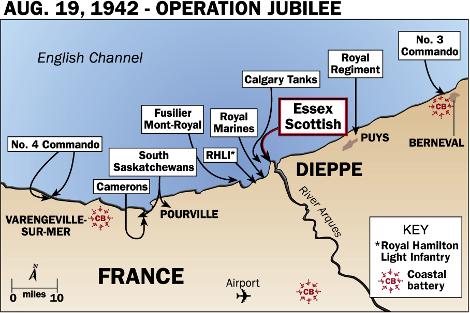
Convoy System
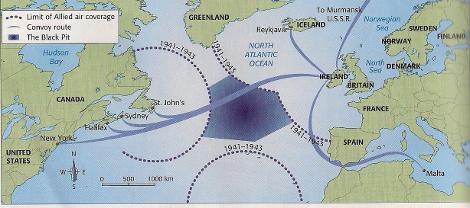
Click here for more notes and information on the Battle of the Atlantic.
Battle of the Atlantic Video. I have not shown this video, but it is good for background information and expanding your knowledge on the war.
Phase 3 – July 1943 to June 1944
• After the great victories at Midway, El Alamein, and Stalingrad the balance of the war shifted in favour of the Allies
• The allies were on the offensive on all fronts
- U.S. forces pushed the Japanese back
- Momentum shifted to the Soviet army, and the Germans began the retreat back to Berlin
- Arial bombing of Germany escalated
Canada's Contribution
- Canada’s air force had expanded greatly
- All-Canadian bomber group by 1943
- Bombing of industrial sections of German cities was carried out around the clock
- The First Canadian Division invaded the island of Sicily (Italy)
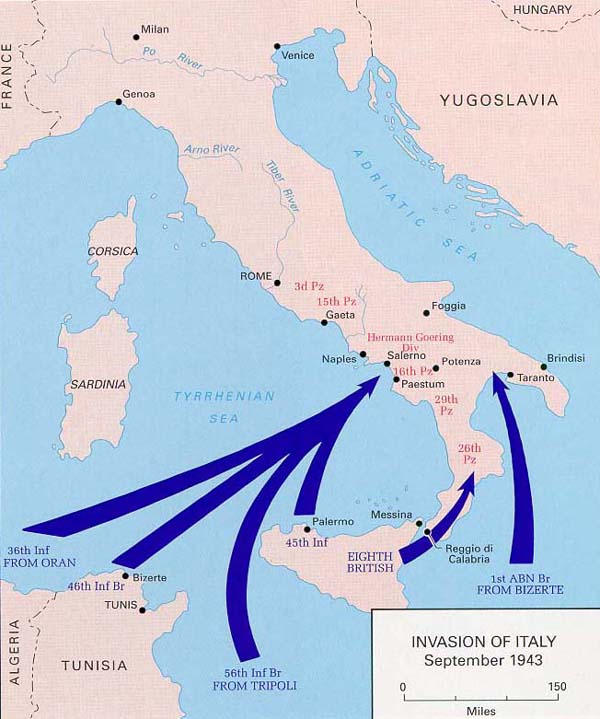
- The Allies then invaded mainland Italy
- This loss led to the eventual overthrow of the Italian government
- Italian government replaced in August 1943
- The new government surrendered in September 1943
- German forces were sent to replace the Italians
- The Italian campaign was a slow, hard-fought battle
- Canadians distinguished themselves in house-to-house and hand-to-hand combat.
Click on the link below for more information of Canada's role in Italy.
The two videos below do a great job of highlighting two of the major turning points in the war. The Battle of Midway in the Pacific and the Battle of Stalingrad on the Eastern Front of the European theater of the war.
Phase 4 - June 1944 to September 1945
- Allied Invasion of Europe was called Operation Overlord
- Landings in Normandy are often called the D-Day landings
- Germany was now fighting on two fronts: the Soviet army in the east and the British, Canadian, U.S. forces in the west
- Germany’s resistance eventually collapsed
- In the Pacific, the United States was closing in on the Japanese home islands
- A new weapon was being developed that the U.S.
Canada's Contribution
- June 6, 1944 Canadian, British, and U.S. troops landed at a series of beaches on the coast of Normandy
- Canada’s beach was code-named Juno •The city of Caen, a road and rail centre, was the main objective
- After the Allied victories at Caen and Falaise, the Germans retreated to Belgium and the German border
- As troops increased, supplies were in high demand – ports needed to be opened up
- The First Canadian Army was assigned the task of clearing coastal areas and opening ports
- Antwerp, Belgium was key:
- The city was captured but the port was 80km away at the mouth of the Scheldt River
- Germans opened dikes to flood the roads to stop the Canadians
- Canadian troops were nicknamed “water rats”
- Antwerp was captured in the Battle of the Scheldt
- The Canadian army moved on to liberate the Netherlands
- Over 6000 Canadian casualties in this campaign
- May 8, 1945 the war in Europe ended
- Canadians stayed in northern Germany to help in the return to peace
- The Air Force patrolled the skies and the Navy patrolled the North Atlantic
- A nation of 11.5 million had put over one million men and women in uniform
Holocaust